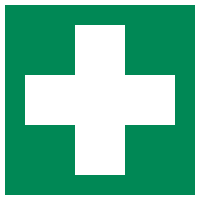
Photo from wikipedia
Summary Fracture liaison services (FLSs) were established to address the well-recognised gap in bone health management after a fragility fracture. However, it is unclear what happens to patients after discharge… Click to show full abstract
Summary Fracture liaison services (FLSs) were established to address the well-recognised gap in bone health management after a fragility fracture. However, it is unclear what happens to patients after discharge from an FLS. Our study suggests FLSs should include a patient bone health education session and a follow-up telephone call 12–18 months post-discharge to optimise management, in particular, to assess therapy adherence and to reinforce bone health advice. Purpose While fracture liaison services (FLSs) have improved bone health management following fragility fracture, it is unclear what happens to patients following discharge from these services. We sought to determine patient self-reported medication adherence and the need for bone-specific health advice ≥ 12 months following discharge from one of the first FLSs in Australia. Methods Patients were contacted by telephone ≥ 12 months following discharge from the Coffs Fracture Prevention Clinic (CFPC)/FLS to determine if the patient was still taking prescribed bone protective therapy (BPT). Bone health advice was provided, if appropriate, during the telephone interview. Results Of the 516 consecutive patients seen in CFPC from July 2012–December 2018, 326 (63.2%) were assessed and discharged from the clinic. One hundred and two patients (19.8%) were lost to follow-up/uncontactable. Of 190 patients commenced on BPT at CFPC and who were discharged ≥ 12 months prior, 141 (74.2%) self-reported adherence with BPT. Bone health advice was required during the telephone call in 60/190 (31.6%) of these patients. Of the 141 adherent patients, 40 (28.4%) had attended a bone health education session, compared to 4/49 (8.2%) patients in the non-adherent group ( p = 0.004). Conclusion At 19 months following discharge from our FLS, self-reported adherence with treatment was 74%. One bone health education session at baseline was associated with increased treatment adherence. At time of telephone contact, one third of patients required further advice to optimise bone health.
Journal Title: Archives of Osteoporosis
Year Published: 2020
Link to full text (if available)
Share on Social Media: Sign Up to like & get
recommendations!